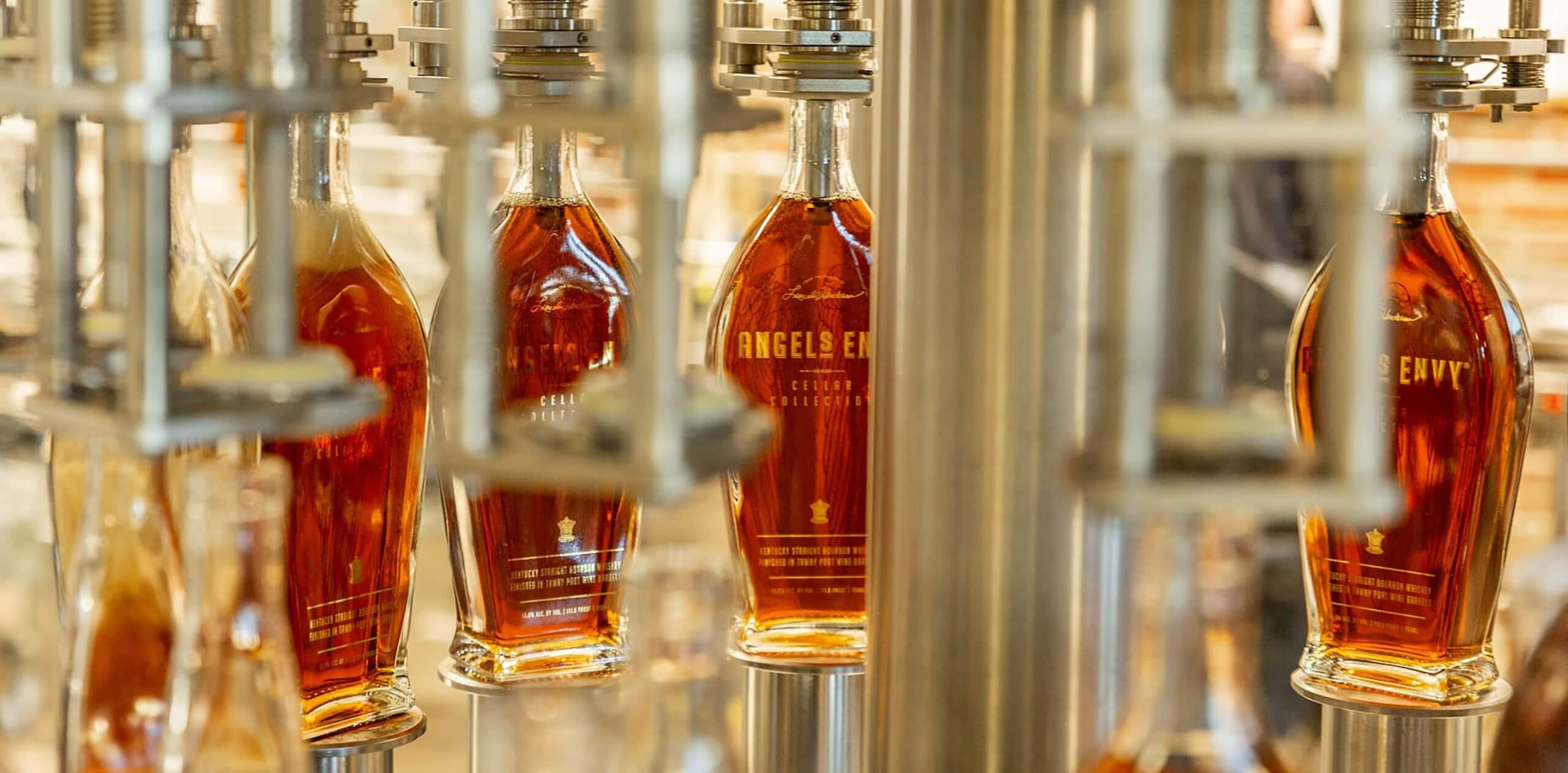Bottles weren’t all that common until the early 20th century

In the early stages of Angel’s Envy, we put a lot of thought into the shape of our bottle. We knew that we had an amazing whiskey on our hands, and we wanted to create a bottle that did it justice, and honestly, we were hoping to stand out on the shelf just a little bit. We drew inspiration for its unique shape from some of the oldest whiskey bottles found in America. But how early was that? Today, it’s hard to imagine buying bourbon differently, but bottles weren’t all that common until the early 20th century.
Before bottling became standard, buying bourbon or whiskey could be a risky proposition. Distillers usually sold to wholesalers, who in turn, would sell to bars, general stores and restaurants. It was this last group that you’d most likely buy your bourbon from. Typically, you’d bring in your own bottle or jug and pay to fill it up there. With a little bit of imagination (and virtually zero regulation) it’s pretty easy to identify how this business model could be problematic for the end-consumer. The distillers were usually fairly blameless. After all, they were essentially creating a neutral grain spirit that usually wasn’t even aged by them. Aging occurred at the wholesale level or in transit (or not at all).
The wholesalers presented the first hurdle between drinking quality bourbon. They weren’t always mean-spirited, but some wholesalers would try to improve the whiskey’s flavor by adding juices or other ingredients to fix the spirit. While that wouldn’t be our first choice for whiskey, and it goes against the legal requirements for bourbon today, it’s at least relatively harmless. More often though, unscrupulous middle-men would sell un-aged or watered down product. Some genuinely bad wholesalers even cut their whiskey with dangerous additives like wood alcohol. Back in the mid-1800s, consistency could vary from excellent to excrement.
And these very same unsavory practices were just as likely to happen at the saloon and shop level. The odds of getting a good bottle of bourbon back then were balanced against the greediness of a lot of strangers. All of this began to change in 1870 when George Brown had an idea. He noticed that consistency was a problem, especially for physicians—who often prescribed whiskey to patients. He wanted to release a more premium, high-quality product exclusively for doctors. He even labeled each sealed bottle with a handwritten, signed pledge promising his whiskey’s quality.

Brown’s product, while trusted, was expensive. But it did mark the beginning of a trend that has lasted to this day. The government passed the Bottled-In-Bond act in 1897—while it means something much different today, back then it ensured that the U.S. government would guarantee the quality of whiskey, but only if it was sold in a sealed bottle. While it gave producers a tax incentive for participating, it also made tax collection on the whiskey considerably easier. To nail yet another nail into the coffin of barrel-sold-bourbon, an automatic bottle-making machine emerged in 1903, making bottling cost-effective for the first time. After prohibition (when whiskey was only legally sold as a medicine) bottles became mandatory. While we still age our product in barrels, we see the benefit of tamper-proof bottles. After all, you deserve the best we’ve got.






